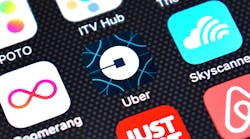Latest from IoT
Sponsored
The fastest growing businesses in the world, such as Uber and Airbnb, using tactics like disintermediation and price transparency, are creating a marketing model that brings buyers and sellers together in an efficient, regulated and innovative manner.
This new model is known by various names: Uberization, the shareconomy, collaborative consumption or the peer economy. A common academic definition of the term refers to a hybrid market (in between owning and gift giving) of peer-to-peer exchange. Such transactions are often facilitated via community-based online services.
Here is a telling quote from a recent article by James Lee, CEO & President, Cimetrics Inc.:
This trend is typical of how “software eats the world.” Uber creates transparency on your transportation needs from initial ride request all the way to payment, compare that with the unknowns of hailing a taxi.
We are just returning from a few days of living in San Francisco, and we have been "Uberized;" an amazing simplification of how what used to be a frustrating experience – catching a taxi -- has been transformed into a fun, sustainable way to move around a city. (The coming leap to autonomous electrical vehicles is not hard to imagine.)
In areas where Uber is not available, it is morphing the politically controlled Taxi into new performance partnerships in which they are actually improving their services. Change drives change, but how will it change our industry?
Not everything about Uberization is positive. It is a disruptive model at the crest of a wave of social change, and social change is never an equal good for all parties involved. As an industry it is our challenge to extract what good we can take from the model and apply it to improving our connection to our customers and the improvement of their Comfort, Satisfaction, and Wellbeing.
But make no mistake, that change is happening, as depicted in this extremely well-read article from last month, Cope with the IOT Revolution by Staying Agile. As the smart building industry rapidly evolves, management strategies pioneered by software developers can help us successfully adapt.
So how can our industry use "Uber" think to delivery Comfort, Satisfaction, and Wellbeing to be a major player in the productivity arena?
How are we positioning and exploring nontraditional partnerships in our industry to support an “Uberized” approach to providing our services focused on satisfaction, care, documented well-being, and measured productivity improvement?
In this article, Location-Based Capabilities, The Comfy Team a productivity pioneer, comes this quote,
My Locations is just the first of more location-based capabilities we will be unveiling for Comfy. As today’s workforce becomes increasingly tech-savvy and mobile, we’re committed to helping each and every person be their best self at work—which includes making Comfy easier to use, everywhere.
In my interview with Stefan Storey, Ph.D. co-founder and CEO of (SBS) Sensible Building Science we talked about how automated virtual occupancy metering solutions are helping owners and managers maintain comfortable, high-efficiency buildings.
Storey: Virtual occupancy metering (VOM) is a method of people-counting without the need for physical sensors. It’s like Google Traffic, but for indoor environments. Our solution, called Bridge, uses existing Wi-Fi activity data to generate VOM data and enable occupant-demand control of building heating, ventilation, and air conditioning (HVAC) systems, without the need to install new equipment such as motion detectors, video cameras, or physical sensors.
Cisco support of Sensible Building Science (SBS) is outlined in this interview with Dr. Rick Huijbregts, Vice President, Digital Transformation and Innovation, Cisco Canada, Cisco Six Years Later.
At the University of British Columbia, we have collaborated on a project that uses data from WiFi access points to optimize and control the HVAC within the building. This effort has led to the creation of a new company, Sensible Building Science (SBS), with whom we now gladly go to market. UBC has been able to use the SBS analytics of our WiFi data to reduce its energy consumption by 5%. We just issued an exciting technical white paper and published a video of the exciting effort.
As our contributing editor Therese Sullivan points out in her article this month, Facebook announced at its mid-April F8 developer's conference that it intends to make its in-app camera the first Augmented Reality platform. It is not waiting for AR glasses to be perfected. Occupants playing with the ‘fridgenotes’ feature could become a facilities manager’s worst nightmare. Alternately, property managers could get ahead of this feature and incorporate this mode of occupant feedback into their workflow processes.
These and many more articles (Investing in Occupant Comfort, Using Analytics to Make the Switch From Reactive to Proactive, The IoT is About Data) discuss the challenge of managing transformative change.
The point is that Uberization is not just coming for the transportation industry – it’s coming for all of us, and we had better be ready to avoid the pitfalls, reap the benefits and then share those benefits in turn with our customers and clients.


